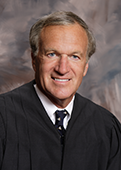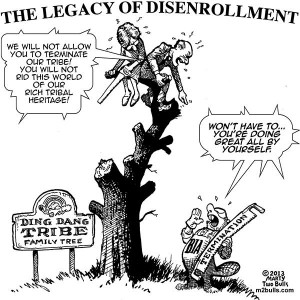Prompted by the Ninth Circuit Court of Appeals’ decision in Confederated Tribes of the Chehalis Reservation v. Thurston County Board of Equalization, 724 F.3d 1153 (9th Cir. 2013), the Washington State Department of Revenue (“DOR”) issued Excise Tax Advisory Interpretive Statement No. 1.1.2014 yesterday. The Interpretive Statement clarifies that permanent improvements on Indian trust lands are exempt from state and local property taxation.
In 2007, Thurston County began assessing “personal property” taxes on the Great Wolf Lodge, a $172 million hotel and resort. The County recognized that the land underneath the Lodge was not taxable, but concluded that the Lodge itself was not tax-exempt because it was owned by a corporation chartered in Delaware, in which the Tribe held a majority 51% share and a non-Indian development company held the minority 49% share. From 2007 to 2009, the County assessed roughly $2.5 million in taxes against the Lodge.

The Tribe filed suit and immediately moved for a preliminary injunction, arguing that the state tax was per se invalid because it was federally preempted by 25 U.S.C. § 465. That statute states, in relevant part, that the Secretary of the Interior may acquire “any interest in lands, water rights, or surface rights to lands, within or without existing reservations,” and to hold title to such lands and rights “in the name of the United States in trust for the Indian tribe or individual Indian for which the land is acquired.” The statute also provides that “such lands or rights shall be exempt from State and local taxation.” The District Court, however, denied the motion, holding that “[a]ssessing a tax against a partially private and partially Indian-owned limited liability company is not an injury” for which a preliminary injunction was warranted. Confederated Tribes of Chehalis Reservation v. Thurston County Bd. of Equalization, No. 08-5562 (W.D. Wash. Oct. 21, 2008), ECF No. 24, at 8. (Ironically, a for-profit business with at least 51% Indian ownership can be treated as an Indian entity under both federal and state law. See 25 U.S.C. § 1452(e); 48 C.F.R. § 26.101; Wash. Admin. Code § 458-20-192(5)(d)).
After completing some discovery, the Tribe moved for summary judgment. Relying upon United States v. Rickert, 188 U.S. 432 (1903), the Tribe again argued that “permanent improvements on Indian trust lands are exempt from taxation” due to federal preemption by 25 U.S.C. § 465. The District Court denied the motion, holding that the “rule of Rickert” did not “bar the taxation in question because this case involves a significantly different factual scenario.” Confederated Tribes of Chehalis Reservation, No. 08-5562 (W.D. Wash. Jul. 2, 2009), ECF No. 61, at 13. The District Court distinguished Rickert by essentially holding that federal law only preempts improvements on Indian trust land when Indians take part in stereotypical “Indian” activity on those lands — and commercial activities do not meet this test. According to the Court,
it cannot be said that the improvements are ‘occupied’ by the Tribe as [the tribal majority-owned corporation] currently uses the improvements to operate a hotel, conference center, and indoor water park. Therefore, the Rickert rule that was implemented to protect a homestead and associated livestock is, in this Court’s opinion, inapplicable to privately owned commercial business ventures even though the improvements are on land held in trust by the United States.
Id. at 13-14. The parties then cross-moved for summary judgment. Having been denied relief under Section 465 preemption, the Tribe was left to argue that the tax was barred under White Mountain Apache Tribe v. Bracker, 448 U.S. 136 (1980), which balances inherent tribal sovereignty with state and federal interests to determine whether, in the specific context, the exercise of state authority would “unlawfully infringe ‘on the right of reservation Indians to make their own laws and be ruled by them.’” Id. at 142 (quoting Williams v. Lee, 358 U.S. 217, 220 (1959)). The Tribe argued that the relevant federal and tribal interests clearly outweighed any interest of the County. The County, of course, argued to the contrary. The District Court held for the County, again finding that the Tribe’s operation of the Lodge simply was not “Indian” enough to outweigh the County’s interests in funding “local law enforcement, emergency medical and fire services, and road maintenance services.” Confederated Tribes of Chehalis Reservation, No. 08-5562, 2010 WL 1406524, at *9 (W.D. Wash. Apr. 2, 2010).
The Tribe appealed, and the Ninth Circuit Court of Appeals overruled the District Court. The Ninth Circuit held that the Tribe was correct all along, explaining that it was “clear that where the United States owns land covered by § 465, and holds it in trust for the use of a tribe (regardless of ‘the particular form in which the [t]ribe chooses to conduct its business’), § 465 exempts permanent improvements on that land from state and local taxation.” Confederated Tribes of Chehalis Reservation, 724 F.3d at 1157 (citing Mescalero Apache Tribe v. Jones, 411 U.S. 145 (1973)). Bracker, the Court held, simply had no application to “property taxes on permanent improvements” on Indian trust land. Id. at 1159.
The Interpretive Statement issued by the DOR memorializes the Ninth Circuit’s holding in Confederated Tribes of Chehalis Reservation and serves as the State of Washington’s go-to document for determining whether the state has intruded on tribal sovereignty through state or local taxation. Along with the Interpretive Statement, the DOR has issued a “FAQs for County Assessors” that discusses, for example, the state’s inability to tax any type of permanent improvement on tribal trust lands, including buildings, orchard trees, and mobile homes that are permanently attached to land.
What is more, the document informs property owners that should not have been taxed in prior years under the Chehalis decision, of their ability to receive a refund from the State. Under Wash. Rev. Code § 84.69.030, property owners have three years from the date the property tax was due to file a claim for refund. In order to claim a refund of taxes that were due April 30, 2011, for example, a claim must be filed with the county treasurer by April 30, 2014.
Hats off to the Chehalis Tribe and their resolve in obtaining this huge, and rare, Indian tax win for all of Washington Indian Country.

Ryan Dreveskracht is an Associate at Galanda Broadman, PLLC. His practice focuses on representing businesses and tribal governments in public affairs, energy, gaming, taxation, and tribal economic development. He can be reached at 206.909.3842 or ryan @galandabroadman.com.







 The recent voting record of the still-seated Washington State Supreme Court Justices in Indian cases, reveals some patterns for the justices:
The recent voting record of the still-seated Washington State Supreme Court Justices in Indian cases, reveals some patterns for the justices:







